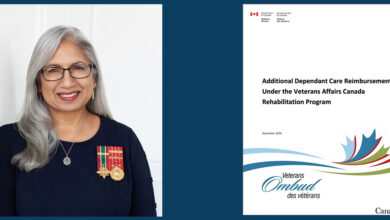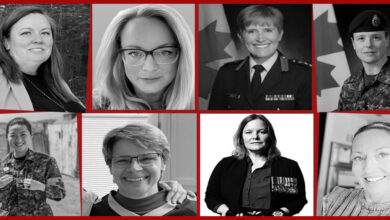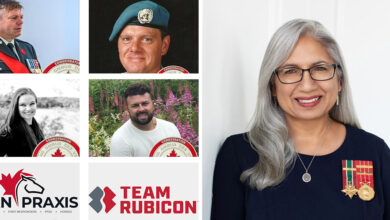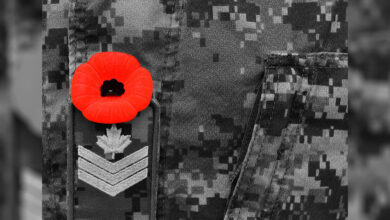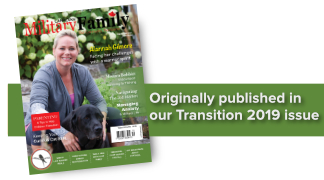 Leaving the Canadian Armed Forces after five, 10, or 25 years can be a challenge for military personnel and their families. Whether the veteran is being medically released or voluntarily releasing, moving through the motions of a military transition can be a confusing time for both the member and the family.
Leaving the Canadian Armed Forces after five, 10, or 25 years can be a challenge for military personnel and their families. Whether the veteran is being medically released or voluntarily releasing, moving through the motions of a military transition can be a confusing time for both the member and the family.
Thankfully there are several resources and programs in place to help ease the Transition.
The Life After Service Studies (LASS) program report, published in 2017, indicated that 52 per cent of Veterans reported an easy adjustment to civilian life, while 32 per cent reported difficulty.
When asked about the effect of their release on their family, most Veterans reported that the Transition was easy for their partner (57 per cent) and their children (60 per cent).
However, 28 per cent of Veterans indicated their partners had difficulty with their release, and 17 per cent reported their children had experienced hurdles with their release.

Transition Experience Varies
Laurie Ogilvie, national manager of policy and program development with Military Family Services (MFS), explained MFS hears that each family experiences transition differently depending on their personal situations.
“Some families struggle with the loss of identity of being part of the Canadian Armed Forces family setting, some experience challenges with readjusting to not having the military member away from home on deployment, some struggle with new employment or retirement of the Veteran, but these cannot be generalized to all families,” noted Ogilvie.
She says that Transition is a significant and personal life change that comes with challenges but also new opportunities.
“Preparing for transition and understanding what the family’s tailored needs are does help mitigate challenges encountered or potentially encountered,” advised Ogilvie.

Variety of Resources Available
Colonel Kevin Cameron, director transition services and policy, points out there are a variety of resources available to both military members and their families. The recently developed “My Transition Guide” is on the top of his list. The guide is available in print or through the Apple Store and Google Play Store.
My Transition Guide includes forms, transition contacts, outreach activities and information for members and their families and lists of seminars, events, and programs aimed towards releasing Veterans and their families.
Each member and each spouse process a transition differently. It’s important to understand that releasing from the military is not always voluntary, and many members can internalize their struggles and hide them from their family members.
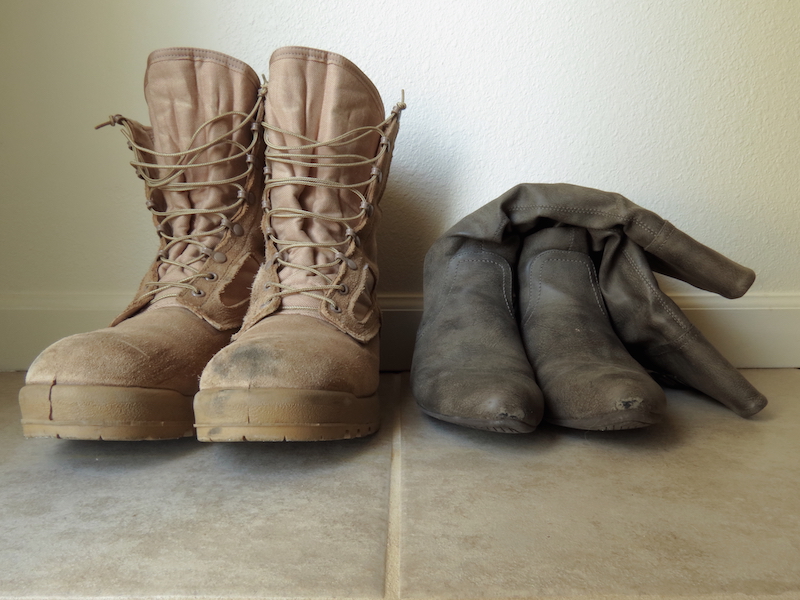
Supporting Spouses During Transitioning
Laurie Ogilvie offers a few pieces of advice to help support a spouse who is transitioning:
- Ask questions to plan appropriately. Each family will transition differently, so families are encouraged to ask questions, seek support, and clarify information so that the best transition plan can be experienced.
- Seek support because you are not alone. There are many service providers available to support you. Reach out and ask for help as required.
- Take care. Transition is a significant life event that could impact all facets of well-being. Take time for personal and family help.

Suggestions for Family Members
Colonel Cameron also suggests that families attend a “Second Career Assistance Network” (SCAN) Seminar at a local base or wings where possible or consider a SCAN online in the comfort of their home to assist in developing family transition plans. (Visit here for more information on SCAN Seminars).
“A lot of information is passed on in these seminars on benefits, pensions, and even the psychological effects of leaving the CAF and can be invaluable to a partner or spouse supporting the member in their transition,” explained Cameron.
Veterans and their families can still utilize community resources such as their local Military Family Resource Centres, where personalized support can be given.
Access to the Family Information Line is still available to releasing members and their families.
The line is an excellent resource for spouses with questions regarding transitioning and can offer counselling to both parties while they navigate the transition journey.
“The family is encouraged to be involved with the CAF member’s transition process by attending meetings and information sessions, and participating in future financial, employment, etc. planning,” noted Ogilvie.
Since April 2019, the Canadian Armed Forces has implemented an initial transition process that includes:
- An examination of all retention options with the member,
- Receipt of a hard copy and/or electronic issue of My Transition Guide
- Signing up for a My VAC account (available online and in Apple and Google Play Stores
- Mandatory Enhanced Transition Training online through the Defence Learning Network for the member and families)
- Career Transition Services offered by Veterans Affairs Canada
If you are looking for information on CAF transition, visit site here.





